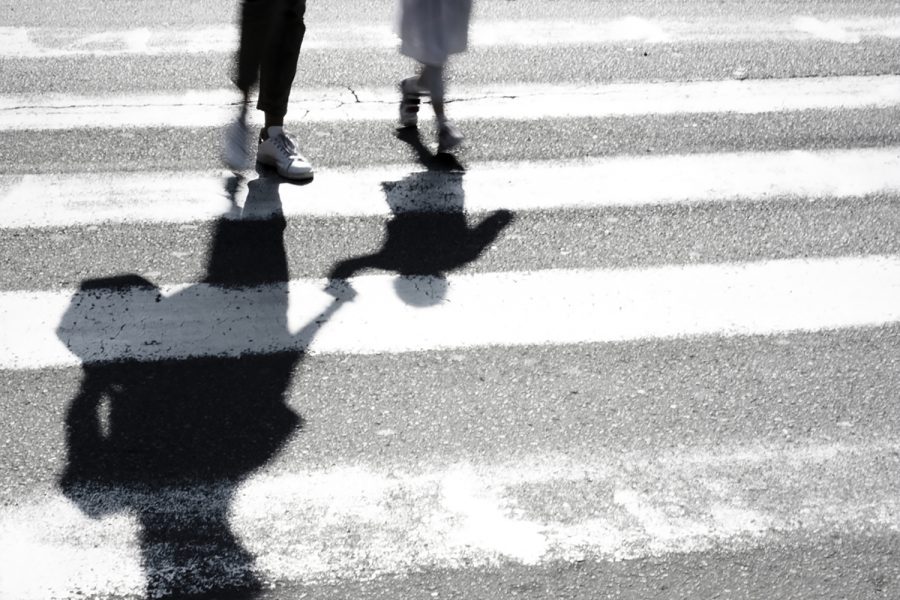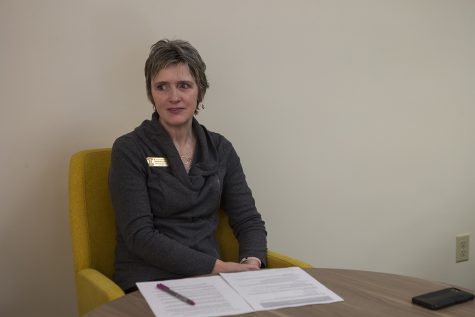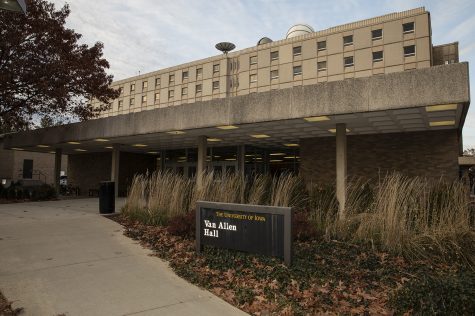UI researchers using virtual reality to study ways children cross streets
Psychology researchers recently paired up with the computer science department to create a virtual simulation in which psychologists are able to find the influences parents might have on their children safely crossing the streets.
Blurry shadow and silhouette of mother and child at zebra crossing.
September 1, 2020
Psychology and Computer Science researchers at the University of Iowa are collaborating to use virtual reality to study how children can safely cross the road.
UI postdoctoral scholar Elizabeth O’Neal, who is studying Psychological Research, said the study is what brought her to the UI campus.
“We are interested in how parents and kids cross streets together and more specifically, how they talk to each other about those decisions,” O’Neal said.
UI Professor of Psychological and Brain Sciences Jodie Plumert said she has been working with this study and many similar perceptual motor developmental studies.
She said parents might be helping children to develop some basic road crossing skills, including the ability to decide when to cross and how to time their movements.
“We can’t study this kind of problem by putting kids and parents out there on the side of the real roadway and asking them to cross the road,” Plumert said. “So, we use this highly realistic virtual environment technology where we can actually put a parent and child side-by-side in this immersive virtual environment, and we can present them with traffic that’s similar to the real world.”
RELATED: UI study shows parents may not know how to deal with cyberbullying
UI Professor of Computer Science Joseph Kearney said he coordinated the virtual environments lab with Plumert and has been working on building virtual environments to study behavior for the past 25 years.
“We primarily focus on problems related to perception and action and virtual environments give us this ability to create worlds where they’re quite real in some aspects,” he said.
Kearney said a lot of the group’s work has been with road crossings and how different factors influence the way people interact with these scenarios.
He said the researchers did an experiment with college-aged individuals in virtual reality that were prompted to cross the street alongside a simulated avatar.
At times the avatar would make more risky crossings, which allowed the researchers to observe how the partner may influence a person’s judgement on crossing the street, Kearney said.
Plumert said the research is a gap between basic and applied research. The applied side of the research involves interventions that could help parents better teach their children how to cross roads, he said.
On the basic research side, Plumert said they are looking at the correlation between how parents are providing support for children when performing a complicated perception of motor skill tasks, such as crossing a busy road.
Their research found that on the basic research side, indicating which gap to cross ahead of time improve kids’ abilities to time their movement through gaps on their own, but parents don’t use this verbal queue very often. O’Neal mentioned their data found that verbal queues were only used 70 percent of the time.
“If we could increase that we think it could help children be better at controlling their movement into traffic, making them safer crossers,” O’Neal said. “When parents use this strategy, we saw something really cool happen, which is that even though younger kids, they were better able to time their movement into the gap.”




















